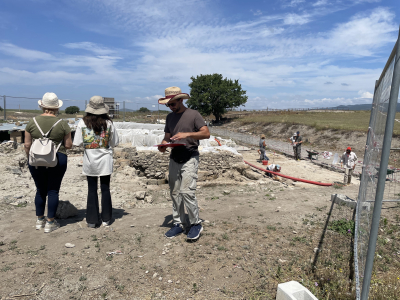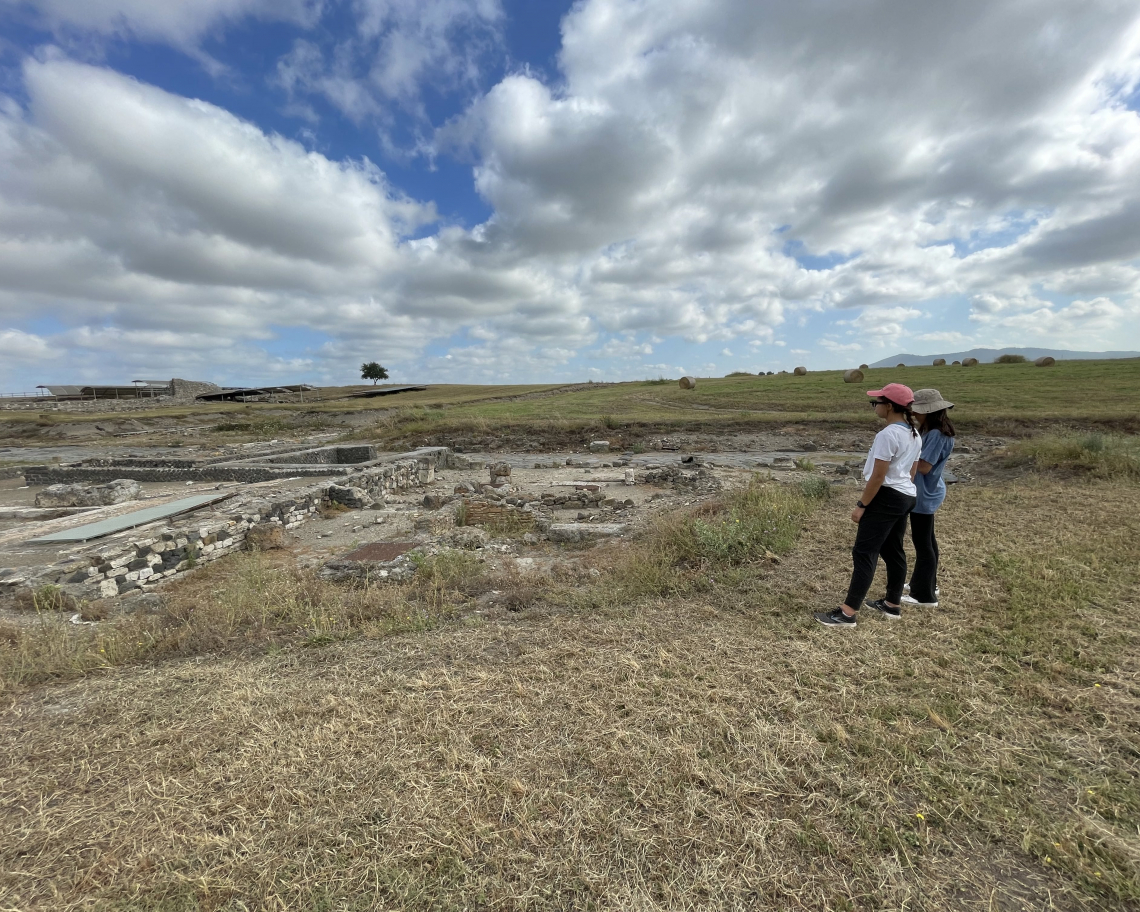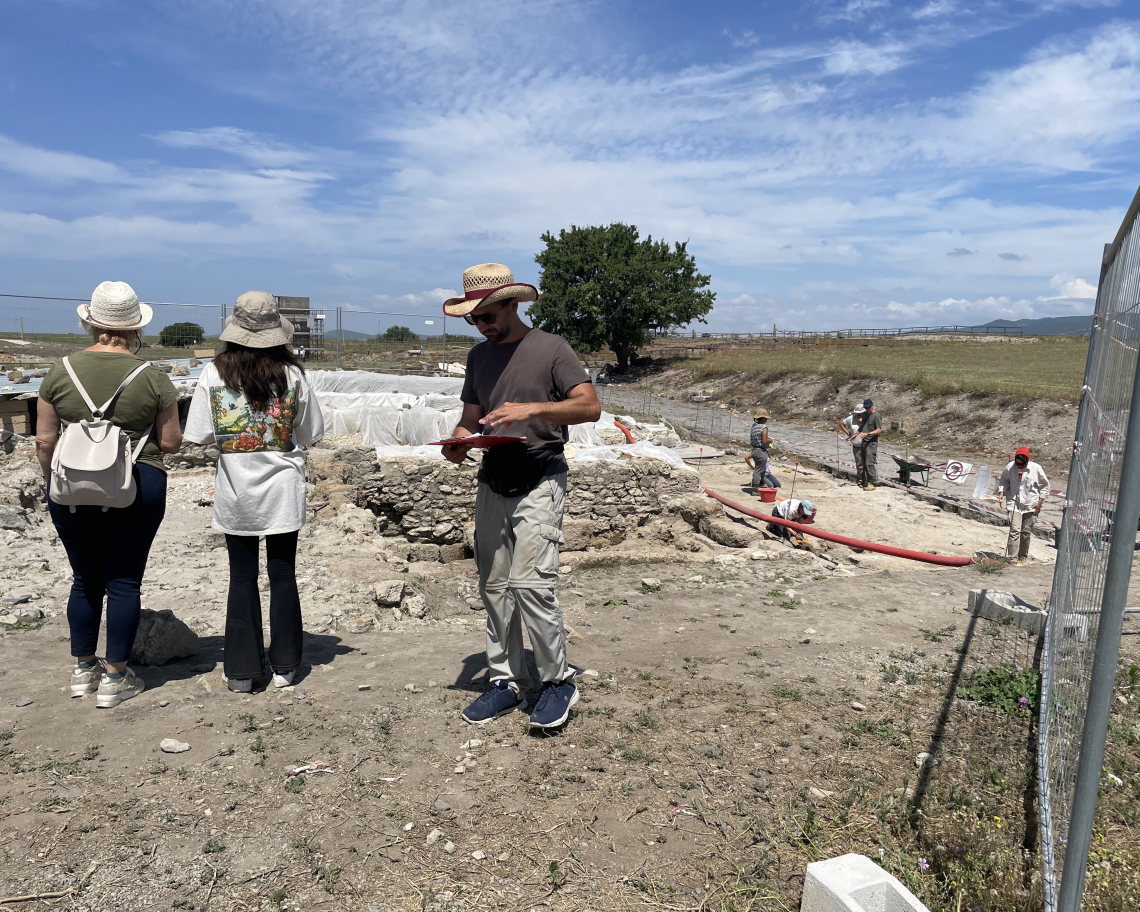
Thanks to the research travel funding from the Classical Studies Department this summer, I was able to conduct research that seamlessly combined my two academic interests of neuroscience and visual studies through the Vulci 3000 Project. As a Neuroscience and Visual Media Studies double major, I had no previous experience in archeology or classical studies, but was able to meaningfully contribute to the initiative through conducting several psychological experiments. Over the course of 2 weeks, my labmates and I were able to work with a group of archaeology experts and many local participants to execute several eye-tracking experiments at the National park of Vulci.
We worked under Professor Maurizio Forte to explore how national park visitors perceived ancient ruins and artifacts from Roman and Etruscan civilizations. We worked both on-site at the National Park of Vulci, as well as within the city of Rome. My roles in this project involved both collecting data on-site—walking human subjects through the process of wearing eye-tracking glasses to track gaze data—and analyzing data with a program that allowed us to generate heat-map visualizations of where viewers focused their attention. This project also had a strong psychological component, as we split experimental groups into two groups: one that was primed with questions that followed the Visual Thinking Strategies framework, and one that was a control group.
Throughout my time on the site, I was fascinated by the complexity of digging on an archaeological site, which requires extreme care and precision as well as the use of advanced digital techniques such as GIS and photogrammetry. At the end of the summer, our team was even able to give a presentation over the Vulci 3000 initiative to a local audience of involved art and archaeology enthusiasts. In my opinion, the most fulfilling part of the project was seeing how involved the local community was in our efforts, from the owners of the on-site restaurant who prepared delicious meals for us daily and always took care to ask us how our work was progressing, to the employees of the visitor center who would generously bring coffee to us during early mornings in the lab.
On days off from working at the site, me and my labmates enjoyed exploring the beachtown of Montalto Di Castro where we were staying, buying local produce and cheese from the open-air markets, trying out different pizzerias, relaxing on the beach, and cooking homemade pasta which we then ate on our roof with our flatmates—who were all Italian! Professor Forte also organized various dinners with collaborators, who generously invited our team to their homes to treat us to home cooked food and conversations about our project. I was also able to travel to the nearby city of Rome by taking the train, where I visited famous landmarks, tried local delicacies like suppli and focaccia sandwiches, and experienced the local markets at Porta Portese. All these experiences collectively enriched my undergraduate education by introducing me to the robust intersections of psychology, classical studies, and media studies—and I would not have been able to do this if it weren’t for this project and the generous funding I received.

